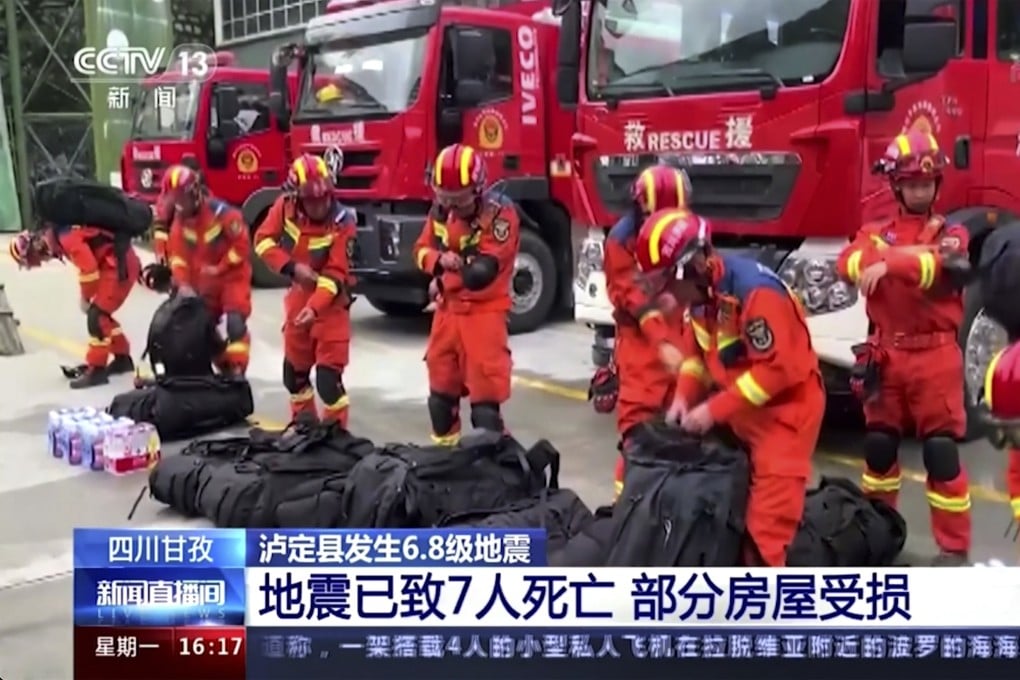China quake: death toll passes 45 after 6.8 magnitude tremors hit Sichuan province
- Rescue work continues into the night as quake marks latest challenge for drought-hit province tackling Covid-19 outbreak
- Epicentre lies about 260km from locked down provincial capital Chengdu, with nearby provinces also reporting tremors

At least 46 people were killed and dozens of others injured when a powerful, shallow earthquake hit a mountainous area of China’s southwestern Sichuan province on Monday afternoon, according to state media.
The 6.8 magnitude quake, which hit at 12.52pm, had its epicentre near a tourist centre in Luding county, about 260km (161 miles) from the provincial capital of Chengdu, the China Earthquake Administration said.
Fourteen people died in Shimian county in the city of Yaan, and at least seven others were killed in Luding county, state broadcaster CCTV reported earlier. At least 31 people were injured, with rescue efforts continuing into the night.
A number of main roads, telecoms lines and houses had been damaged and officials were still trying to determine the extent of impact, the county government said.
At least six moderate aftershocks were recorded until 4pm, with more expected, the quake authorities said.
